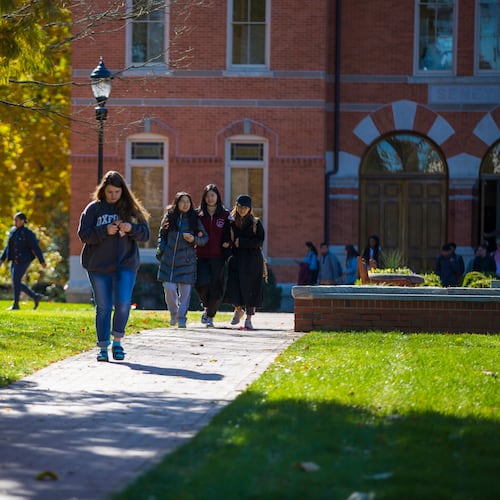*Editor’s note: This story was originally published on January 16, 2019.
Martin Luther King Jr.’s speeches and marches made him an icon of the civil rights movement, but less known is the support he gave to those advocating for black students in his hometown.
His encouragement is evident in the time he took to help a white woman who ran for an Atlanta school board seat in 1961, when local schools finally began to integrate.
Letters between King and Sara Mitchell Parsons provide a glimpse into the school system during that critical era.
That year, nine black students enrolled in previously all-white Atlanta high schools. While violence didn't erupt during that first day of school the way it did in other cities, schools still were deeply inequitable.
During her first year in office, Parsons made unannounced visits to each of Atlanta's 154 schools. She recounted her impressions and what she viewed as the sluggish pace of integration in her memoir, "From Southern Wrongs to Civil Rights."
Thomasville Elementary, she noted, was “cheaply constructed.” Like other schools in black neighborhoods, she said it might look good outside but the inside was “shoddy.”
Atlanta’s black schools were overcrowded and run-down. The school day was shorter, and students were using hand-me-down books from white schools, she reported.
In 1963, Parsons wrote to King about what she had seen and asked to meet with him.
King, of course, already was familiar with Atlanta schools. He attended third through sixth grade at the David T. Howard building, which APS plans to reopen in 2020 after a roughly $50 million renovation. King graduated from Booker T. Washington High School.
When Parsons reached out to him, King was a civil rights giant. The next year, in 1964, he would win the Nobel Peace Prize. Still, he met with Parsons to discuss Atlanta’s school problems. She told him how one black school she visited had just one basketball hoop, while a white school had 15. The white schools also had more books, and the buildings were better maintained.
Parsons recounted how King listened carefully and asked her to keep in touch. She did.
A couple of their back-and-forth letters are included in Parsons’ autobiography. In one from 1963, King thanked her for “the courageous stand you are taking on the Atlanta School Board for the cause of brotherhood and integration. I appreciate your strong, forthright statements far more than words can express.”
In a 1967 letter archived online by The King Center, he wrote to her about the “appalling lack of material” about African-American history and culture available in public schools.
Parsons died in 2011. King was assassinated in 1968.
It’s been more than half a century since Parsons toured Atlanta schools and spoke to King about the many ways black students were being treated unfairly.
Concerns persist, for example, on state test results. In 2018, the percentage of Atlanta's white students who scored proficient or above was more than 60 percentage points higher than that percentage of Atlanta's black students in English, math, science and social studies, according to a July report.
When the current Atlanta school board took office a year ago, Chairman Jason Esteves said student equity was the district's top priority.
The next community update on that and related work is scheduled for 6 p.m. Jan. 22 at Sutton Middle School.
About the Author
Keep Reading
The Latest
Featured



